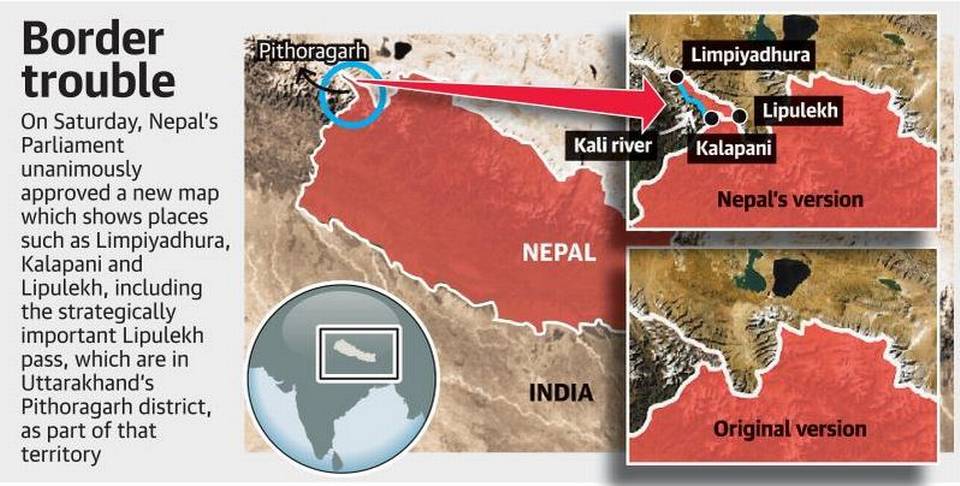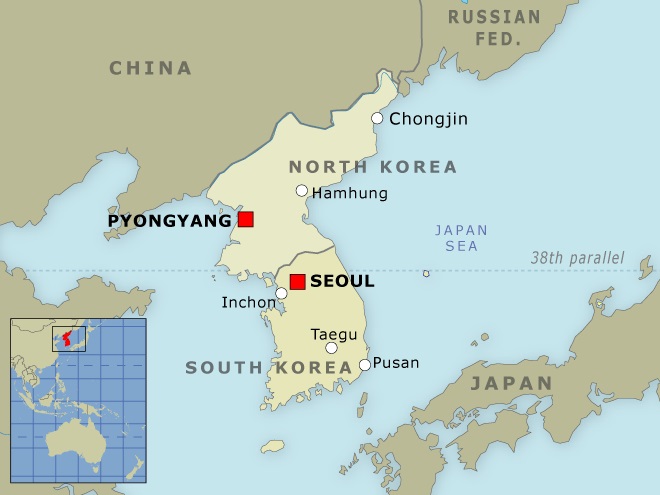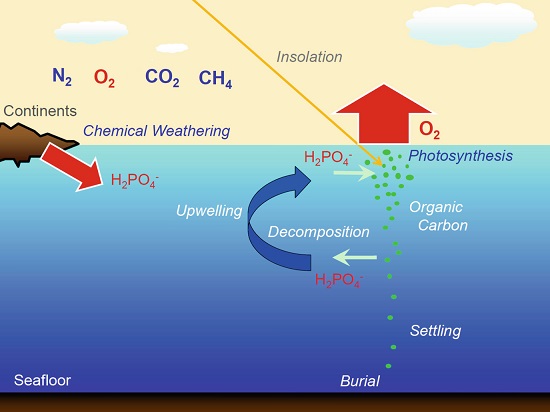Contents
- Nepal passes amendment on new map
- Returning labourers to work for Jal Jeevan Mission
- Stop denuclearisation talk, North Korea warns South
- Earth’s ice-free land and human influence
- Oxidation Event
NEPAL PASSES AMENDMENT ON NEW MAP
Focus: GS-II International Relations
Why in news?
The Lower House of Nepal’s Parliament unanimously passed the historic Second Constitution Amendment Bill guaranteeing legal status for the updated political map of Nepal which includes India’s territories in Uttarakhand’s Pithoragarh district.

India’s Response
The Ministry of External Affairs said that the artificial enlargement of claims is not based on historical fact or evidence and is not tenable, and it is violative of our current understanding to hold talks on outstanding boundary issues.
The Territorial Dispute
- The territorial dispute stems from the fact that Nepal claims the land to the east of river Kali, which forms the country’s western border.
- As per Kathmandu’s understanding, the river originates from Limpiyadhura in the higher Himalayas, giving it access to a triangular-shaped land defined by Limpiyadhura-Lipulekh and Kalapani.
- India opposes the notion and says the origin of the river is much further down, which reduces Nepal’s territorial demand.
Current Proceedings
- Nepal unveiled the new map on after Defence Minister Rajnath Singh inaugurated Darchula-Lipulekh link road.
- Nepal had earlier strongly protested when the updated Indian map published in November 2019 showed the region as part of Uttarakhand.
- Nepal claims right to the region and says India was allowed to station troops there in the 1950s and that Delhi has refused to remove forces from the region ever since.
Click Here to read more about the new Lipulekh Link road
-Source: The Hindu
RETURNING LABOURERS TO WORK FOR JAL JEEVAN MISSION
Focus: GS-II Social Justice
Why in news?
The Jal Jeevan Mission is being pushed as a way to ameliorate some of the effects of the mass migration of inter-State workers back to their home States in the wake of the COVID-19 pandemic by providing them with work.
Details
- The Jal Shakti Ministry, the nodal ministry for the implementation of the scheme, has written to various States that returning labour, especially those working in the construction sector (skilled, unskilled and semi-skilled), may be deployed to expedite the completion of works under the scheme, as an arrangement that could provide employment to the currently unemployed workers.
- That a huge demand for work has been created because of returning workers is clear from the fact that allocations under the Mahatma Gandhi National Rural Employment Guarantee Act (MGNREGA) have already been hiked.
- Skill mapping by various State governments has shown that a majority of inter-State workers returning home are from the construction sector.
Click Here to read more about the Jal Jeevan Mission (1st Article)
Mahatma Gandhi National Rural Employment Guarantee Act (MGNREGA)
- Mahatma Gandhi National Rural Employment Guarantee Act, MGNREGA, is an Indian labour law and social security measure that aims to guarantee the ‘right to work’. This act was passed in September 2005.
- It aims to enhance livelihood security in rural areas by providing at least 100 days of wage employment in a financial year to every household whose adult members volunteer to do unskilled manual work.
- It covers all districts of India except the ones with 100% urban population.
- MGNREGA is to be implemented mainly by gram panchayats (GPs). The involvement of contractors is banned.
- Apart from providing economic security and creating rural assets, NREGA can help in protecting the environment, empowering rural women, reducing rural-urban migration and fostering social equity, among others.
Objectives of MGNREGA
- Provide 100 days of guaranteed wage employment to rural unskilled labour
- Increase economic security
- Decrease migration of labour from rural to urban areas
-Source: The Hindu
STOP DENUCLEARISATION TALK, NORTH KOREA WARNS SOUTH
Focus: GS-II International Relations
Why in news?
North Korea issued statement against Seoul, excoriating it for “nonsensical” statements on the stalled dialogue about Pyongyang’s nuclear weapons.
This was in response to South Korean Foreign Ministry official reportedly said Seoul would continue “efforts for denuclearisation”, referring to the long-stalled nuclear talks between the United States and North Korea.

India – North Korea Relations
- India and North Korea have growing trade and diplomatic relations. India maintains an embassy in Pyongyang, and North Korea has an embassy in New Delhi.
- India is one of North Korea’s biggest trade partners and a major food aid provider.
- India is a critic of North Korea’s nuclear proliferation record and has also voiced concerns of denuclearization and disarmament over its military relationship with Pakistan.
- India has repeatedly condemned North Korean nuclear tests and views its nuclear programme as a threat to regional security.
- North Korea is estimated to have one of the largest global deposits of minerals and rare earth metals necessary for India’s IT industry and electronic majors.
- A major factor that inhibited India’s steps towards the North Korean market in the past was the sensitivity of South Korea towards such a move.
Non-Proliferation Treaty
- The Treaty on the Non-Proliferation of Nuclear Weapons, commonly known as the Non-Proliferation Treaty or NPT, is an international treaty whose objective is to prevent the spread of nuclear weapons and weapons technology, to promote cooperation in the peaceful uses of nuclear energy, and to further the goal of achieving nuclear disarmament and general and complete disarmament.
- The NPT is often seen to be based on a central bargain: “the NPT non-nuclear-weapon states agree never to acquire nuclear weapons and the NPT nuclear-weapon states in exchange agree to share the benefits of peaceful nuclear technology and to pursue nuclear disarmament aimed at the ultimate elimination of their nuclear arsenals.”
- The treaty defines nuclear-weapon states as those that have built and tested a nuclear explosive device before 1 January 1967; these are the United States, Russia, the United Kingdom, France, and China.
- Four other states are known or believed to possess nuclear weapons: India, Pakistan, and North Korea have openly tested and declared that they possess nuclear weapons, while Israel is deliberately ambiguous regarding its nuclear weapons status.
- The Treaty has 189 States Parties, which is the largest number of any arms control agreement.
- However, India, Israel and Pakistan have not signed the NPT.
- North Korea announced its withdrawal in 2003, and further announced that it had conducted an underground nuclear explosion in 2006 and 2009.
-Source: The Hindu
EARTH’S ICE-FREE LAND AND HUMAN INFLUENCE
Focus: GS-III Environment and Ecology
Why in news?
A recent study that compares four recent global maps of the conversion of natural lands to human land has concluded that the more affected half of Earth’s lands includes cities, croplands, and places intensively ranched or mined.
Details
- Approximately 15% of the Earth’s land surface and 10% of the oceans are currently protected in some form.
- There have been bold global calls for governments to commit to protecting 30% of the land and water by 2030 and 50% by 2050.
- Intact natural lands across the globe can help purify air and water, recycle nutrients, enhance soil fertility and retention, pollinate plants, and break down waste products.
Land Conservation and Diseases like Covid-19
- Leading scientific evidence points to the likelihood that SARS-CoV2, the virus that causes the disease COVID-19, is a zoonotic virus that jumped from animals to humans.
- Ebola, bird flu, and SARS are other diseases known to have spilled over into the human population from nonhuman animals.
- Human risk to diseases like COVID-19 could be reduced by halting the trade and sale of wildlife, and minimizing human intrusion into wild areas.
Which areas have the least human impact?
- Among the largest low-impact areas are broad stretches of boreal forests and tundra across northern Asia and North America and vast deserts like the Sahara in Africa and the Australian Outback. These areas tend to be colder and/or drier and less fit for agriculture.
- Areas having low human influence do not necessarily exclude people, livestock, or sustainable management of resources.
- A balanced conservation response that addresses land sovereignty and weighs agriculture, settlement, or other resource needs with the protection of ecosystem services and biodiversity is essential.
-Source: The Hindu
OXIDATION EVENT
Focus: GS-I Geography
Introduction
Oxygen first accumulated in the Earth’s atmosphere about 2.4 billion years ago, during the Great Oxidation Event.
A new interpretation of rocks billions of years old finds volcanic gases are the likely cause for holding back the rise of oxygen in the Earth’s atmosphere.
Details
- The data from the recent study demonstrates that an evolution of the mantle of the Earth could control an evolution of the atmosphere of the Earth, and possibly an evolution of life.
- Multicellular life needs a concentrated supply of oxygen, so the accumulation of oxygen is key to the evolution of oxygen-breathing life on Earth.
How does the oxygen level reduce?
- The Archean Eon, when only microbial life was widespread on Earth, was more volcanically active than today.
- Volcanic eruptions are fed by magma – a mixture of molten and semi-molten rock – as well as gases that escape even when the volcano is not erupting.
- Some of those gases react with oxygen, or oxidize, to form other compounds. This happens because oxygen tends to be hungry for electrons, so any atom with one or two loosely held electrons reacts with it.
- For instance, hydrogen released by a volcano combines with any free oxygen, removing that oxygen from the atmosphere.
Great Oxidation Event

- The Great Oxidation Event (GOE) was a time period when the Earth’s atmosphere and the shallow ocean experienced a rise in oxygen, approximately 2.4 billion years ago (Paleoproterozoic era).
- Geological, isotopic, and chemical evidence suggests that biologically produced molecular oxygen (dioxygen, O2) started to accumulate in Earth’s atmosphere and changed Earth’s atmosphere from a weakly reducing atmosphere to an oxidizing atmosphere, causing many existing species on earth to die out.
- The cyanobacteria producing the oxygen caused the event which enabled the subsequent development of multicellular forms.
-Source: The Hindu



